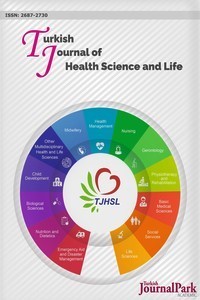MORPHOMETRIC CHARACTERS FOR AXILLARY SEABREAM PAGELLUS ACARNE FROM ANTALYA GULF (MEDITERRANEAN-TURKEY)
MORPHOMETRIC CHARACTERS FOR AXILLARY SEABREAM PAGELLUS ACARNE FROM ANTALYA GULF (MEDITERRANEAN-TURKEY)
Objective: The present study reports morphometric characteristics for Pagellus acarne caught by trawl from the Antalya Gulf (Mediterranean-Turkey). In addition, length-weight relationships are also estimated and compared with those estimated from other areas. Methods: Individuals of P. acarne were collected during September - December 2011 from trawl surveys conducted in the Antalya Gulf (Mediterranean-Turkey). Morphometric characters were measured directly on the fish body (15 characteristics) and head (7 characteristics). Meristic characters were counted. Length-weight relationship was calculated using the equation W = aTLb.Results: During the study period, a total of 360 specimens of P. acarne, ranging in size from 8.9 to 26.7 cm in total length and from 7.7 to 275 g in total weight, were collected. The length-weight relationship for all individuals was described by the parameters a = 0.0057 and b = 3.29. From the twenty one morphometric characters the13 were showed allometric growth according to TL while the 8 morphometric characters were showed isometric growth according to TL. The proportions of the examined morphometric characters were ranged from 0.02 (for the lenght of the base of ventral fin) to 0.51 (for the preanal distance).Conclusion: The morphometric characters were showed strong correlation with the TL. Length - weight relationship showed that the P. acarne populations grow allometric (Weight increased allometrically with length).
___
- 1. Spedicato MT, Greco S, Sophronidis K, Lembo G, Giordano D, Argyri A. Geographical distribution, abundance and some population characteristics of the species of the genus Pagellus (Osteichthyes: Percirformes) in different areas of the Mediterranean. Scientia Marina 2002; 66(S2): 65-82.
- 2. Andaloro F. Résumé des paramètres biologiques sur Pagellus acarne de la mer Tyrrhénienne méridionale et de la mer Ionienne septentrionale. FAO Fish. Pap., 1982; 266: 89-92.
- 3. Domanevskaya MV. Specifics of the distribution of Pagellus acarne (Sparidae) in the southwestern Mediterranean Sea. Journal of Ichthyology 1982; 22(2):127-130.
- 4. Coelho R, Bentes L, Correia C, Gonçalves JMS, Lino PG, Monteiro P, Ribeiro J, Erzini K. Age, growth and reproduction of the axillary seabream, Pagellus acarne (Risso, 1827), from the south coast of Portugal. Thalassas 2005; 21 (1): 79-84
- 5. Fehri-Bedoui R, Mokrani E, Ben Hassine OK. Feeding habits of Pagellus acarne (Sparidae) in the Gulf of Tunis, central Mediterranean. Scientia Marina 2009; 73(4): 667-678.
- 6. Tosunoğlu Z. Trawl codend design (44 mm diamond PE mesh) and the effect on selectivity for Pagellus erythrinus and Pagellus acarne, two species with different morphometrics. Journal of Applied Ichthyology 2007; 23: 578–582.
- 7. Mennes F. Multispecies assessment of fish stocks off the Western Sahara region with emphasis on the family Sparidae. Naga 1985; 3: 5-10.
- 8. Lamrini A. Sexualité de Pagellus acarne (Risso, 1826) (Teleosteen Sparidae) de la cote Atlantique Meridionale du Maroc (21º - 26º). Cybium 1986; 10: 3-14.
- 9. Pajuelo JG, Lorenzo JM, Reproduction, age,growth and mortality of axillary seabream, Pagellus acarne (Sparidae) from the Canarian archipelago. Journal of Applied Ichthyology 2000; 16 (2): 41-47.
- 10. Erzini K, Gonçalves JMS, Bentes L, Lino PG. Fish mouth dimensions and size selectivity in a Portuguese longline fishery. Journal of Applied Ichthyology 1997; 13: 41-44.
- 11. Zar JH. Biostatistical Analysis. 3nd ed. Prentine-Hall, Englewood Cliffs, NJ, 918 pp, 1996.
- 12. Hair GF, Anderson RE, Tatham RL, Black WC. Multivariate data analysis. Fifth Edition. Prentice-Hall International, Inc., 730 pp, 1998.
- 13. Ricker WE. Linear regression in fisheries research. Journal of the Fisheries Research Board of Canada 1973; 30: 409-434.
- 14. Dobzansky T. Genetic of evolutionary process. Columbia University Press, New York, 732 pp. 1970.
- 15. Soule M, Couzin-Roudy J. Allometric variation. 2. Developmental instability of extreme phenotypes. American Naturalist 1982; 120: 765–786.
- 16. Petrakis G, Stergiou KI. Weight-length relationships for 33 fish species in Greek waters. Fisheries Research 1995; 21: 465-469.
- ISSN: 2687-2730
- Başlangıç: 2018
- Yayıncı: Mümin POLAT
